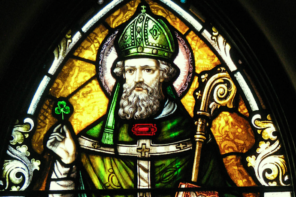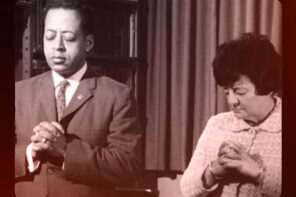For a long period of my life, sometime after I stopped attending Christian church services, I made it a ritual to listen to John Coltrane’s A Love Supreme in its entirety on Sunday afternoons. I’m not sure where I heard the album first, or what exactly inspired me to do so. I only remember doing it, and feeling I was doing something that was not only good for me, but also important.
Some people don’t get it. But for those who do, the religious experience of it all is palpable. Some blend of harmonics and melodics, tradition and improv, mastery and experimentation, makes A Love Supreme one of the great religious movements in modern life. Recorded in a four-hour session on December 9, 1964, with Coltrane on soprano and tenor saxophone, Jimmy Garrison on bass, McCoy Tyner on piano, and Elvin Jones on drums, the music does not discriminate, inspiring the secular and the spiritual alike.
To celebrate this week’s fiftieth anniversary of this iconic recording, music venues around the world are staging performances of Coltrane’s work—including, of course, Saint John Coltrane African Orthodox Church in San Francisco.
The Coltrane church began in the late 1960s, when Franzo Wayne King and then-girlfriend Marina King heard Coltrane perform in San Francisco. They called their experience of hearing him live, a “sound baptism.” This led them to form the “Yardbird Temple,” named with Charlie Parker in mind, and with jazz at its base. In 1982 the little independent congregation joined the global fellowship of the African Orthodox Church, a denomination that began in the 1920s as an African-American split from the Episcopal church.
The African Orthodox denomination continues in operation, albeit in relatively small numbers. The Coltrane church does not, as some might imagine, “worship” John Coltrane any more than a church called St. Mark’s worships Mark. The African Orthodox church officially canonized Coltrane, so the designation of “Saint John Coltrane” is a religious fact, and not a postmodern gesture.
Today, the congregation meets every Sunday. The church is filled with some locals, some devout believers, and generally a small throng of tourists. The vibe is a mix of jazz concert, charismatic Christianity, and some new age-y “all is one” dialogue. It is definitely San Francisco in all its goofy glory. Like many African-American church services, music mixes with prayer and preaching, and before you know it, three hours have passed, which is about six times as long as the four movements of A Love Supreme.
What is it about Coltrane, and in particular A Love Supreme, that gets some of us going spiritually? Coltrane was after truth, as one biographer put it, and not necessarily “pleasant listening.” I am attracted to this idea, that truth is difficult and can not easily be possessed. The corollary here is that there is no truth in Musak, and not much in the pop charts. In classical terms “truth” and “beauty” are not interchangeable.
Perhaps more importantly, truth is heard. It is an activity of the ears. And these are not necessarily the sounds of words being spoken, but a sensual experience that operate above and beyond the conceptual, intellectual realm. Truth is in the sensual arts, not rational philosophy.
True, Coltrane wrote some unapologetically religious words for the liner notes of A Love Supreme, giving “all praise to God,” and thanking God for his “spiritual awakening” of 1957 which, as we know from his biography, had also to do with his quitting heroin and alcohol. (Even so, the abuses had already been enough that he died of liver failure at age 40.) But who can resist putting the liner notes down quickly and sitting and listening: “Acknowledgement,” “Resolution,” “Pursuance,” and “Psalm,” making up the four parts of the musical journey.
I recently wrote about drums, and the vital role the sounds of drums have played in a history of religions. Drums, like other musical instruments, come alive, become possessed, and become the residence of the gods themselves. Where the split between sound and player is, is impossible to discern. Jazz drummers like Art Blakey, Christian drummers like Teryl Bryant, and former Grateful Dead percussionist Mickey Hart, have each found the pursuit of drumming to be indistinguishable from spiritual pursuits.
So with John Coltrane. When he is pouring his breath into the saxophone in the midst of “Pursuance,” part III of A Love Supreme, distinctions between music and musician, instrument and player, and music and listener, break down. Maybe it’s a mystical experience, God reaching to us through the music. Or maybe it’s just the musical arrangement itself, some deliciously delicate balance of sounds that settle and unsettle all at once, reaching our eardrums and resonating through our bodies.
I’ve since lost my Sunday ritual of listening—no, experiencing—A Love Supreme. But from time to time, when I think I might need it, or when something beyond me is pushing me in new ways, I find my copy of the album, now digital, and allow the transportation to take place. Getting lost in the music and getting found in the sound.
Cue it up.
Correction: a previous version of this article specified alto sax, when in fact Coltrane played tenor and soprano on ‘A Love Supreme.’




